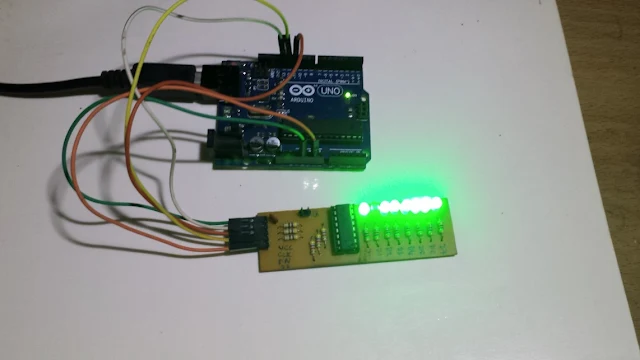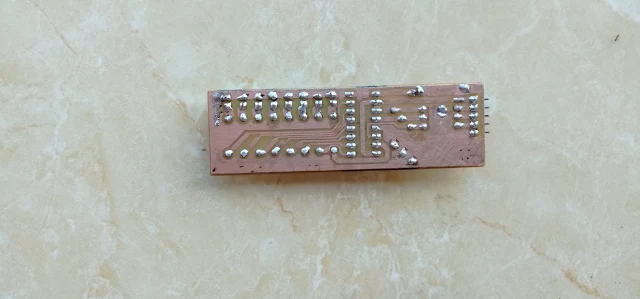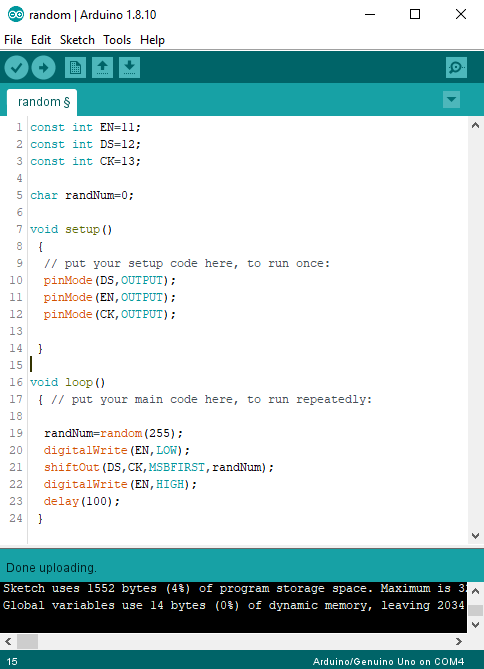LEDs Driver Making
As referred in the previous post, I made a single seven segments board based on SN74HC595N.
Here, I make a similar one, but the 74HC595 at this time drive 8 LEDs. It's just a simple example of using 74HC595 with Arduino.
 |
| A sample of running program |
I use Proteus 8 to design the schematic and PCB.
 |
| Schematic Diagram |
I export the PCB pattern including copper track and legend side.
 |
| Copper Side |
 |
| Top Silk |
 |
| A 3D View |
 |
| A completed Soldering Board |
The Proteus design file could be downloaded here.
Arduino Programming And Interfacing
I use the same shiftOut() function to transmit the data the registers. With and additional random() function to create a random numbers up to 255, and displaying it on LEDs.
The syntax of random() function is:
random(max)
random(min, max)
Where,
min - is the lower bound valuemax - is the upper bound value
This function return a created random number as set. Arduino source code lists below. Arduino sketch could be downloaded here.
We can use the ATMega32 microcontroller to interface to some serial to parallel shift registers chips.
- ATMega32 Interfaces To SN74HC164 Shift Registers
- ATMega32 SPI Interfaces To SN74HC164 And LED
- ATMega32 SPI Interfaces To SN74HC164 And LCD Using 3 Pins
- ATMega32 And SN74HC164 Serial Seven Segment Display
- ATMega32 SN74HC164 Seven Segments Display And Switch Interfacing
- ATMega32 SN74HC164 Three-Digit Multiplexing Display
- ATMega32 SPI Interfaces With SN74HC595 For Character LCD Controlling


Your article is extremely helpful exceptionally fascinating subject i am looking that sort of post thank for imparting to us keep it up. Marsauto LED bulbs
ReplyDeleteGreat article with excellent idea!Thank you for such a valuable article. I really appreciate for this great information.. Marsauto LED bulbs
ReplyDeleteThanks for visiting my blog.
ReplyDeleteLooks incredible behind my TV. toseoledlighting.com
ReplyDeleteExcellent insights! This post provides immense value with clear takeaways and real-world relevance. Thanks for sharing such helpful content—definitely bookmarking this for future reference. Looking forward to exploring more on this topic!
ReplyDelete